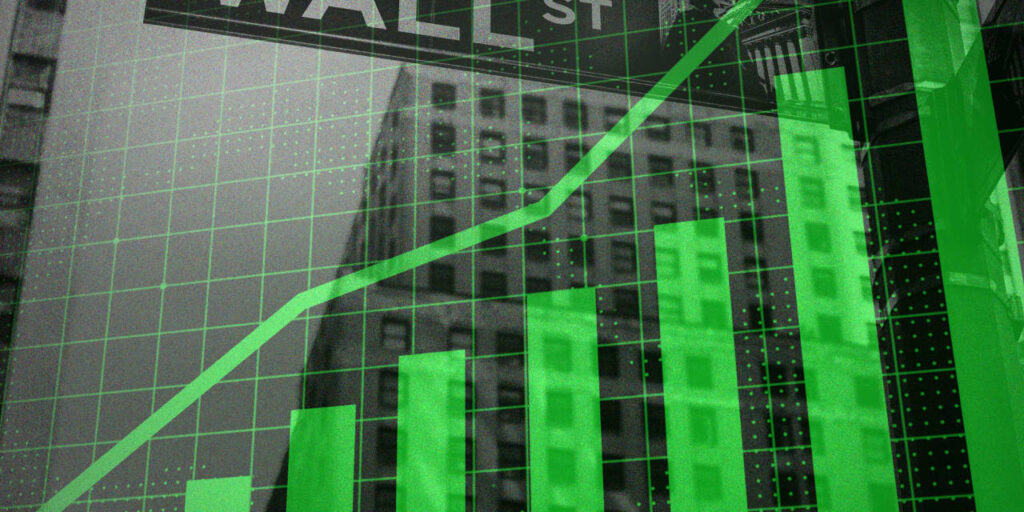Most market strategists would agree those are some strange bedfellows. But the torrid November rally in stocks is starting to morph into something more frothy, analysts say, and both speculative and defensive assets are getting taken along for the ride.
Some have described it as the latest leg of an “everything rally” fueled by a broad macro bet on Federal Reserve interest-rate cuts beginning early next year.
The ‘everything rally’, with a ‘FOMO’ twist
To be sure, this dynamic isn’t exactly new, having briefly emerged during the summer of 2022, and during other brief bouts of optimism stoked by hopes for a Fed pivot.
But after a year that has seen many active managers lag the S&P 500, this latest round of year-end profit-chasing is seeing a more speculative twist.
“Don’t underestimate performance-chasing,” said Mohannad Aama, the chief investment officer and a senior portfolio manager at Beam Capital Management, in a phone interview with MarketWatch.
“As someone who has managed money professionally, there are huge incentives to go all-in.”
Steve Sosnick, chief strategist at Interactive Brokers, told MarketWatch that Wall Street appears to be succumbing to another bout of “FOMO,” or the fear of missing out.
“FOMO is back, baby! Traders have decided that even though it is still earning nearly 5%, cash is trash compared with quick profits in a variety of risk assets,” Sosnick said in comments emailed to MarketWatch on Wednesday.
Traders pile into speculative bets
What exactly are traders going “all in” on?
Well, shares of GameStop Corp.
GME,
surged on Tuesday and Wednesday, while the Ark Innovation ETF
ARKK,
seen as a proxy for speculative technology stocks, rose 2.8% on Tuesday, and continued to climb on Wednesday despite weakness in the “Magnificent Seven” megacap technology names.
Bitcoin prices
BTCUSD,
have climbed north of $38,000 for the first time since the spring of 2022, FactSet data showed. This helped boost shares of Coinbase Global Inc.
COIN,
a large ARK holding, which rose more than 7% on Tuesday.
Traders are also using bullish equity options to chase the rally, strategists said, while bets on a large swing in Nvidia Corp.
NVDA,
shares are looking like a popular play.
Open interest in call options that would pay off if Nvidia shares surged 24% or more has surged, as has demand for bearish put options that would pay off if Nvidia falls 17% or more from Tuesday’s close of $407.80.
Garrett DeSimone, head of quantitative research at OptionMetrics, described these bets as “basically wagers on a large Nvidia price swing.”
Demand for calls linked to the S&P 500 has also increased. The Cboe equity put-call ratio has fallen from around 1.20 just a couple of weeks ago to 0.79 on Wednesday.
And a team of analysts at Goldman Sachs Group said there is room for the options’ bullish “skew” to become even more extreme. Others agreed.
“Options traders have been playing catch up all month,” said Callie Cox, a U.S. equity strategist at eToro, in an email to MarketWatch.
‘All the same trade’
Among the more defensive trades, the SPDR Gold Shares ETF
GLD,
a popular vehicle for betting on gold prices, rose 1.3% to $189.26 a share on Tuesday as gold prices surged toward six-month highs following the latest batch of dovish Fed rhetoric. The ETF is up more than 3% in November as of midday Wednesday, according to FactSet.
Commodities Corner: Gold rallies toward ‘golden cross’ after defying bearish signal
Treasury bonds also rallied in what bond-market experts describe as a “bull steepening” pattern led by short-dated notes like the 2-year Treasury. The yield on the 2-year Treasury
BX:TMUBMUSD02Y
has fallen by nearly 20 basis points since the start of Tuesday’s session, FactSet data show. It traded at 4.664% on Wednesday, its lowest level since June.
“It is all the same trade,” said Danny Kirsch, head of options at Piper Sandler, during a phone call with MarketWatch on Tuesday.
Rate cuts stoke optimism, but risks remain
Rate cut hopes got another boost Tuesday when Fed Gov. Christopher Waller, considered a hawk when it comes to interest-rate policy, surprised investors by saying cuts could begin as soon as this spring, assuming inflation continues to wane.
“I don’t know how long that might be — three months, four months, five months — that we feel confident that inflation is really going down and on its way, you could then start lowering the policy rate just because inflation is lower,” Waller said.
See: Fed’s Waller says economy may be slowing enough to tame inflation. Fed’s Bowman not convinced.
Since then, futures traders have priced in a 45% probability that cuts could begin as soon as the Fed’s March meeting.
Since the start of the month, the S&P 500
SPX
is up 8.8%, while the Invesco QQQ Trust
QQQ,
which tracks the Nasdaq-100
NDX,
is up 11.4%. Both are on track for their best months since July 2022, according to FactSet data.
Meanwhile, small-caps, which have lagged behind the market all year, have experienced a run-up similar to a sudden sprint higher back in June. The Russell 2000
RUT
is up 7.9%, on track to match its June gains, or potentially surpass them. The index was up 1.1% at 1,812 in recent trade on Wednesday, handily outperforming the S&P 500, Nasdaq Composite
COMP
and Dow Jones Industrial Average
DJIA.
But before the market’s rate-cut euphoria gets out of control, investors should think long and hard about the potential risks to rate cuts in the first quarter, said Beam’s Aama.
“Everybody thinks that the sooner the Fed cuts rates, the better for stocks,” Aama said. “But if the Fed cuts rates in the first quarter, that means they have a good reason, and it could be [problems with] the economy.”
Read the full article here

